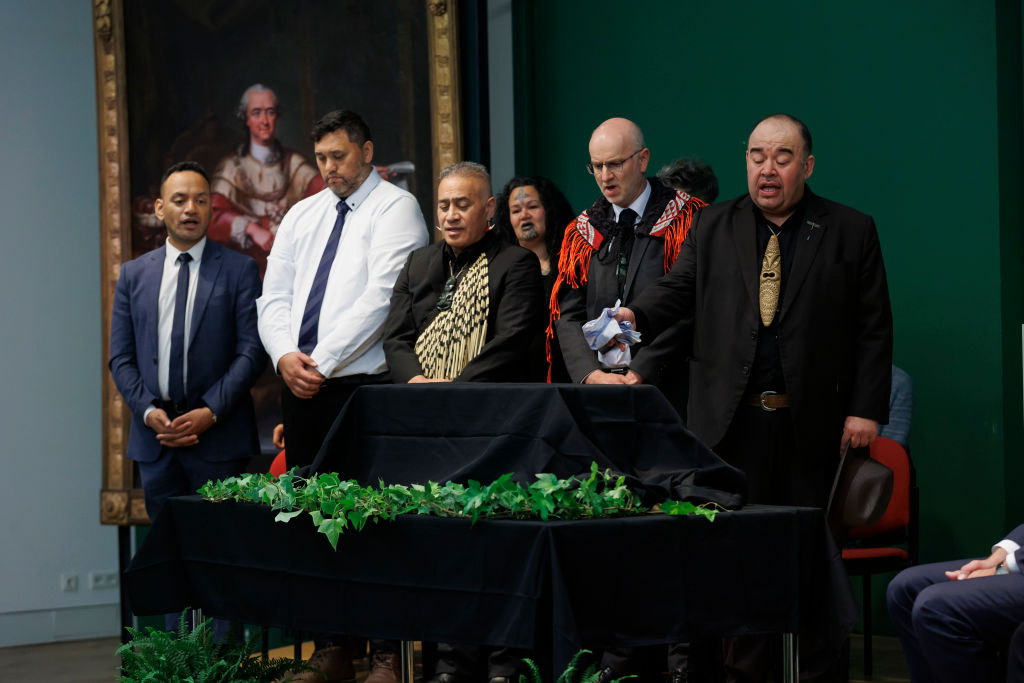In Paris, Loewe Sets Artist Richard Hawkins’s Collages in Motion
Loewe unveiled its Autumn/Winter 2024 menswear collection on Saturday during Paris Fashion Week with help from Los Angeles-based painter and University of California, Los Angeles professor Richard Hawkins.
For the show, Jonathan Anderson, Loewe’s creative director, tapped Hawkins to create digital collages meant to mimic arched stained glass windows, while clips faded in and out of young men seemingly posed for private videos or engaged in casual shirt-tugging. Additionally, six of Hawkins’ paintings were hung strategically around the space around the space, as if mimicking a low-budget New York group exhibition.
As Vogue Paris Correspondent Laurie Guilbault wrote, luxury labels from Prada to Louis Vuitton appeared to be playing with “archtypes of masculinity” on the runway and beyond. Loewe, too, was playing with that theme, according to Guilbault, which she described as “a new kind of masculinity — one that is playful and sexy.”
Hawkins’ work, in that respect, may have been the ideal fit. In 2009, New York Times‘ Roberta Smith characterized Hawkins’ subject matter as a collection of “pretty young men cut out of magazines and clothing catalogs,” rebelling against a “high-minded, asexual” gallery and museum world. Anderson seemed to draw from the suggestive cues that have consistently emerged in Hawkins’ practice since then: sending models traversing the venue’s runway with garments undone, belts unbuckled, and fur vests partially covering bare torsos.
During the show’s more modest instances, men showed up in more fragile form, while immersed in oversized sweaters, with the features of Hawkins’ adolescent subjects, blank stares and mouths ajar, appearing in print, jacquard on knit, and on oversized Squeeze bags.
For fashion watchers, the show is perhaps an introduction to Hawkins’s influence. A catalog accompanying the 2012 Whitney Biennial in New York, where Hawkins’s work was featured, described how his practice more broadly involves scrutinizing artistic conventions, exploring “sometimes taboo pleasures of the body and of looking at the body.”
Fast forward more than a decade, Loewe’s collaboration with Hawkins gives Anderson a chance to deconstruct disparate elements that have shaped the concept of a muse, featuring Hawkins’s depictions of internet heartthrobs mingling with disembodied classical statues. In recent months, the designer has nodded to the potential for more artist features in future collections, claiming that his aim is to move beyond art-adjacent projects that feel superficially engaged.
“Were committed to showing what you would see in a major gallery,” he said.












